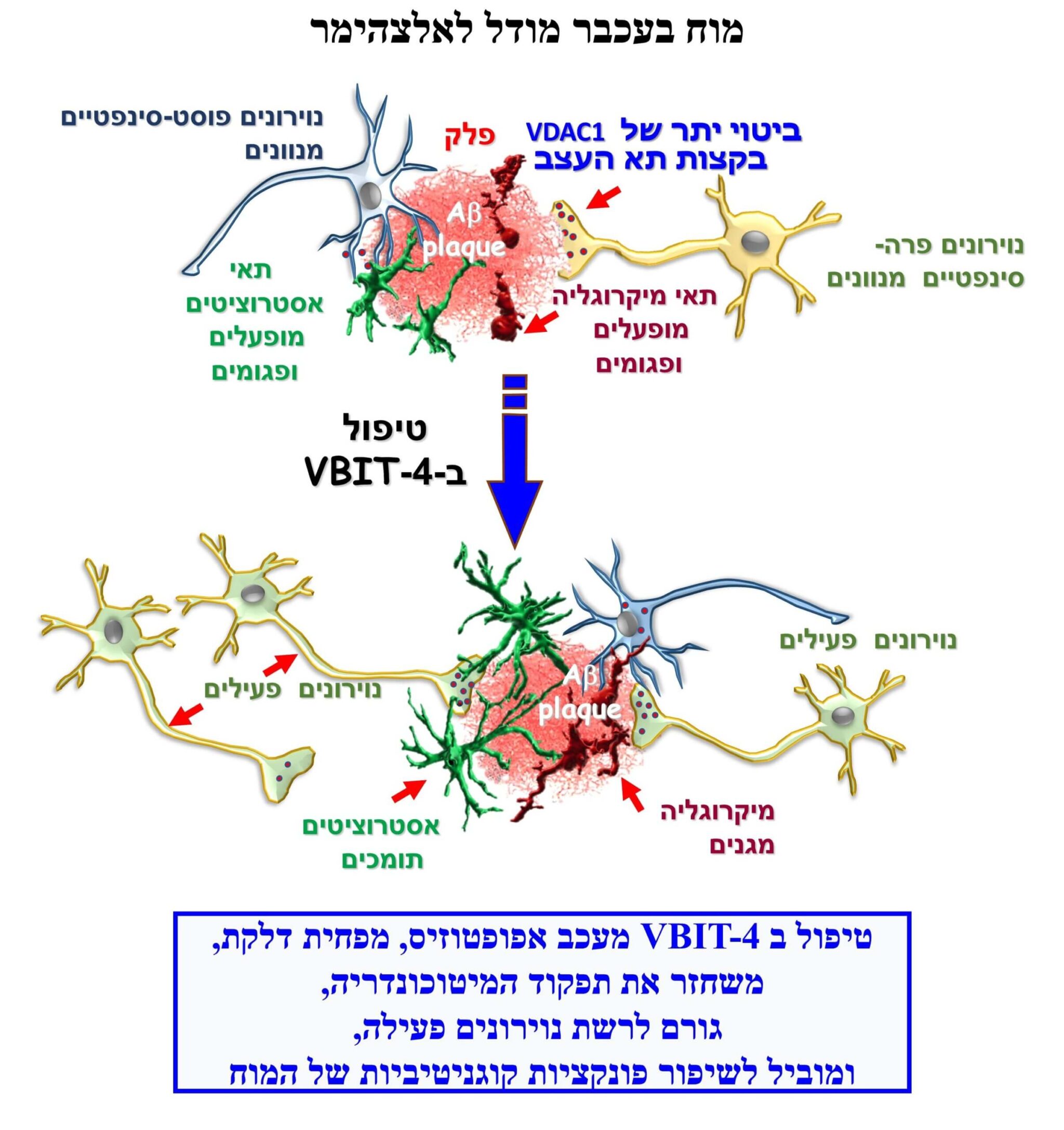The research carried out at Ben Gurion University focused on the VDAC1 protein that controls mitochondrial activity and controls cell life and death

By 2050, the number of Alzheimer's patients is expected to reach about 135 million people. The need for an effective treatment is increasing, but despite the knowledge that the disease is associated with mitochondrial dysfunction, drug research has not yet focused on this area. Now, researchers from Ben-Gurion University of the Negev offer an innovative approach to treating the disease, by targeting the VDAC1 protein, which is the gatekeeper of the mitochondria and controls metabolism. The study was published in the journal Translational neurodegeneration.
Alzheimer's disease is characterized by severe memory impairment, cognitive impairments and currently affects approximately 50 million people worldwide. About 10 million new diagnoses are received every year, and this figure will reach more than 135 million by 2050.
Significant evidence pointed to an impairment of the metabolic mechanism in Alzheimer's patients that develops several decades before the onset of dementia and deterioration of cognitive function. At least 25% of the glucose in the body is used to maintain the basal metabolic rate of the brain, but in Alzheimer's patients, this rate is greatly reduced.
Reduced metabolism is caused by a dysfunction of the mitochondria, which is responsible for producing most of the energy in the cell, but is also involved in cell death, inflammation and the immune response. Therefore, scientists from the National Institute of Biotechnology at Ben-Gurion University of the Negev under the leadership of Prof. Verda Shoshan-Barmetz in collaboration with Prof. Shira Knafo, Prof. Alon Monsongo וProf. Noga Vardi from the University of Pennsylvania, They studied the dysfunction of the mitochondria in Alzheimer's disease in a mouse model and tested a possible treatment.
The research focused on the VDAC1 protein that controls mitochondrial activity and controls cell life and death. The studies of Prof. Verda Shoshan-Barmetz In the past, it was pointed out that an increase in the amount of the VDAC1 protein in the cell leads to its organization in a structure centered on a large channel through which proteins that cause cell death and mitochondrial DNA that lead to the development of inflammation are released.
Moreover, Prof. Verda Shoshan-Barmetz It showed an increase in the amount of VDAC1 in heart diseases, intestines (colitis), autoimmune diseases such as lupus and others. Here, the researchers showed that the protein is also produced in a huge amount in the brain of a mouse with Alzheimer's and is concentrated in the nerve cells around the plaque, cells that show a decrease in metabolic activity and proteins related to neural activity.
In response to all these, in the laboratory of Prof. Shoshan-Barmetz A small molecule, VBIT-4, was developed that binds to the VDAC1 protein and prevents its organization into the large canal and therefore prevents the changes associated with Alzheimer's. The molecule prevents symptoms such as the death of nerve cells, inflammation, metabolic dysfunction as well as the damage to other brain cells (such as the astrocytes and microglia that are important for normal brain function). Furthermore, the treatment was also able to prevent a decline in cognitive skills such as learning and memory.
"The molecule we developed presents an innovative approach to the treatment of Alzheimer's disease and can even be used as a preventive treatment," noted the lead researcher Prof. Verda Shoshan-Barmetz. "It is interesting to note that protection against Alzheimer's pathology was obtained by the new molecule without a significant reduction in the amount of plaques that accumulate in the brains of patients and are considered the main causes of Alzheimer's."
These findings together with the data indicating the failure of hundreds of clinical trials based on reducing the amount of plaques, contradict the hypothesis that these proteins are the main cause of the disease. In this study, other factors are presented as a target site such as improving metabolism, preventing cell death and inflammation, which may change the prevailing opinion so far about the primary cause of Alzheimer's.
This research (No. 974/19) was supported by the National Science Foundation, and by a grant from the National Institute of Biotechnology in the Negev (NIBN).
The research group included Dr. Anna Kuzmin-Steinfer, Dr. Ankit Verma, Dr. Edna Nahun-Krystal, Students and post-doctoral students from the laboratory of Prof. Verda Shoshan-Barmetz, Ben-Gurion University of the Negev.
More of the topic in Hayadan:
- Cancer treatment succeeds in reprogramming cancer cells and returning them to a pre-cancerous state
- DNA transferred between two fertilized eggs: a breakthrough and hope for the prevention of mitochondrial diseases
- A nanocomputer that controls the activity of a protein
- Technion students have developed computational methods for predicting the amount of harvest available for distribution

2 תגובות
What about the 40 Hz frequency stimulation? There is a very serious study that shows a reduction of the plaque at a high level only from 40 Hz stimulation or a 40 Hz flashing light. Check it out.
And congratulations on the research on how to naturally consume a molecule containing vbit 4.?
very impressive! Kudos to those involved in the craft, led by researcher Prof. Verda Shoshan-Barmetz, of course.
I am hopeful that these findings will lead to the development of innovative drugs as soon as possible, which may even be able to help and save patients from a variety of diseases in addition to Alzheimer's.